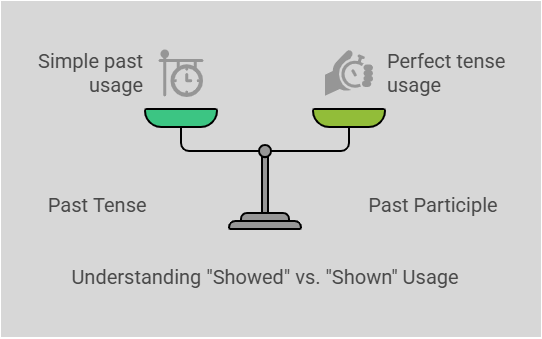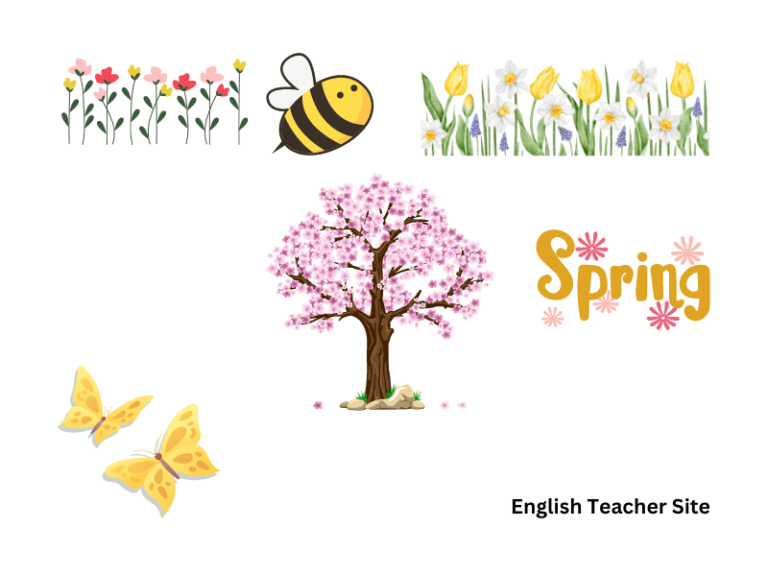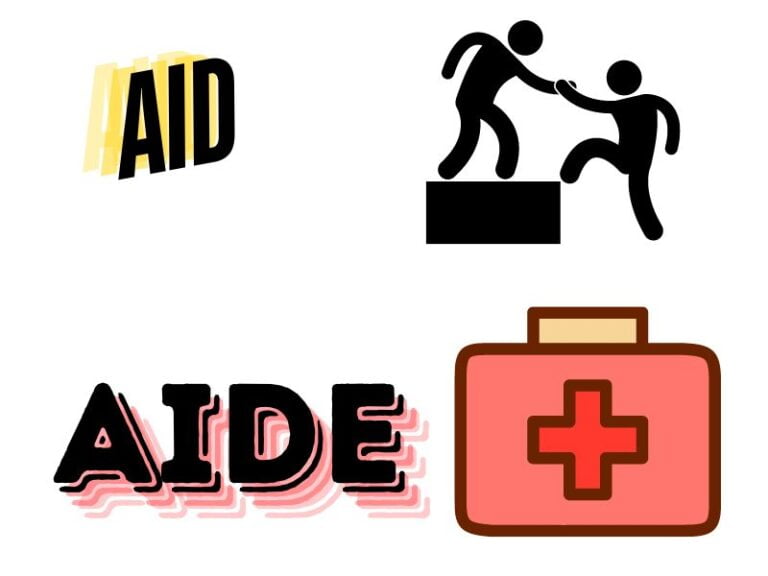Showed or Shown Unlocking the Secrets of Show’s Plural Forms

The Past Tense Form: Showed
The Past Participle Form: Shown
Introduction: The Mystery of Showed or Shown
Understanding the difference between “showed” and “shown” is crucial for proper grammar, yet many learners stumble over these two forms. This seemingly small difference can lead to significant misunderstandings if not mastered. While both forms refer to the past actions of the verb “show,” they are used in different contexts. The difference lies not only in the tense but also in the way each form functions within a sentence.
Mastering these forms ensures you use grammar correctly, which is crucial for clear, effective communication. It’s more than just a grammar lesson; it’s about ensuring that your message comes across exactly as you intend.
Quick Overview of Regular and Irregular Verbs: Where Does ‘Show’ Fit?
“Show” is an irregular verb, which means its past tense and past participle forms don’t follow the typical “ed” pattern of regular verbs. For regular verbs, the past tense and past participle are the same: “talk” becomes “talked.” But for irregular verbs like “show,” the forms diverge, leading to “showed” in the past tense and “shown” as the past participle. Understanding this distinction is fundamental to correctly using both “showed” and “shown.”
The Past Tense Form: Showed
When to Use ‘Showed’ in a Sentence
“Showed” is the simple past tense of “show.” It is used when referring to a specific moment in the past when the action was completed. This form is straightforward and clear, emphasizing that the action of showing happened in the past.
For example, when you say, “She showed the guests around the city,” you are indicating that the action of showing occurred in the past and was completed at that moment.
Common Errors with ‘Showed’ and How to Avoid Them
One common mistake is using “showed” when the past participle “shown” should be used, especially in perfect tenses. For example, instead of saying, “I have showed him the document,” the correct form would be “I have shown him the document.” To avoid such errors, it’s essential to remember that “showed” is used for simple past tense, while “shown” is used for perfect tenses.
The Past Participle Form: Shown
What Makes ‘Shown’ Different from ‘Showed’?
“Shown” is the past participle form of “show” and is used with auxiliary verbs such as “have,” “has,” or “had.” This form highlights the result or impact of the action, not just the time it occurred. The use of “shown” suggests that the act of showing was completed, but its effects are ongoing or relevant.
For example, “I have shown him the proposal” indicates that the action of showing happened at some point in the past, but it has implications in the present, such as the person still being aware of or affected by the proposal.
How to Use ‘Shown’ in Perfect Tenses
“Shown” is commonly used in present perfect, past perfect, and future perfect tenses. These tenses emphasize the completion of an action in relation to another event or moment. Examples include:
- Present perfect: “I have shown the presentation to the team.”
- Past perfect: “By the time they arrived, I had shown them the results.”
- Future perfect: “By tomorrow, I will have shown you how to do it.”

Key Differences Between Showed and Shown
The key difference between “showed” and “shown” lies in their grammatical roles. “Showed” is used when describing an event that took place at a specific point in the past, while “shown” is used when the action is tied to another event, typically with an auxiliary verb. The distinction is subtle but important for proper grammar.
When Both Forms Can Be Used: Exceptions and Special Cases
Instances Where Both ‘Showed’ and ‘Shown’ May Appear in the Same Context
In certain instances, both forms may appear within the same sentence, especially when comparing actions in the past. For example, one might say, “She showed him the idea, and now she has shown him the final draft.” Here, “showed” is used for a simple past action, and “shown” is used for an action that is connected to the present.
Exploring Regional Variations in Usage
There are some regional variations in the usage of “showed” and “shown,” particularly in informal speech or dialects. In certain regions, people may use “showed” in places where “shown” is grammatically correct in standard English. These variations, however, should be avoided in formal writing.
Practical Exercises: Mastering Showed and Shown
Fill-in-the-Blank Exercises to Test Knowledge of Both Forms
- By the time we arrived, he __________ (show) us the new designs.
- She __________ (show) the guests around the city last summer.
- I have __________ (show) you the way already; why are you asking again?
Sentence Correction Challenges
Correct the following sentences by choosing between “showed” and “shown”:
- I had showed him the results before the meeting started.
- By this time tomorrow, I will have showed the presentation to the committee.
- She has showed the documents to the lawyer already.
Real-Life Examples for Better Understanding
Apply the knowledge by looking at examples from everyday conversation, literature, or business emails to spot the proper usage of “showed” and “shown.”
Conclusion: Why Knowing Showed and Shown is Key to Fluent Communication
Understanding the difference between “showed” and “shown” is essential for clear and professional communication. Mastery of these forms enables you to express ideas more precisely and avoid common grammar pitfalls. Confidence in using past tense and past participle forms will boost your fluency and elevate your overall language skills. Keep practicing, and soon the distinction between “showed” and “shown” will be second nature.
Source
Harper, Douglas. “Etymology of show.” Online Etymology Dictionary
My name is Khamis Maiouf. I am the creator of the English Teacher Site, dedicated to providing valuable resources and insights for students around the world. With a passion for education and a commitment to helping students enhance their skills, I aim to make English teaching more effective and enjoyable for both educators and students.






